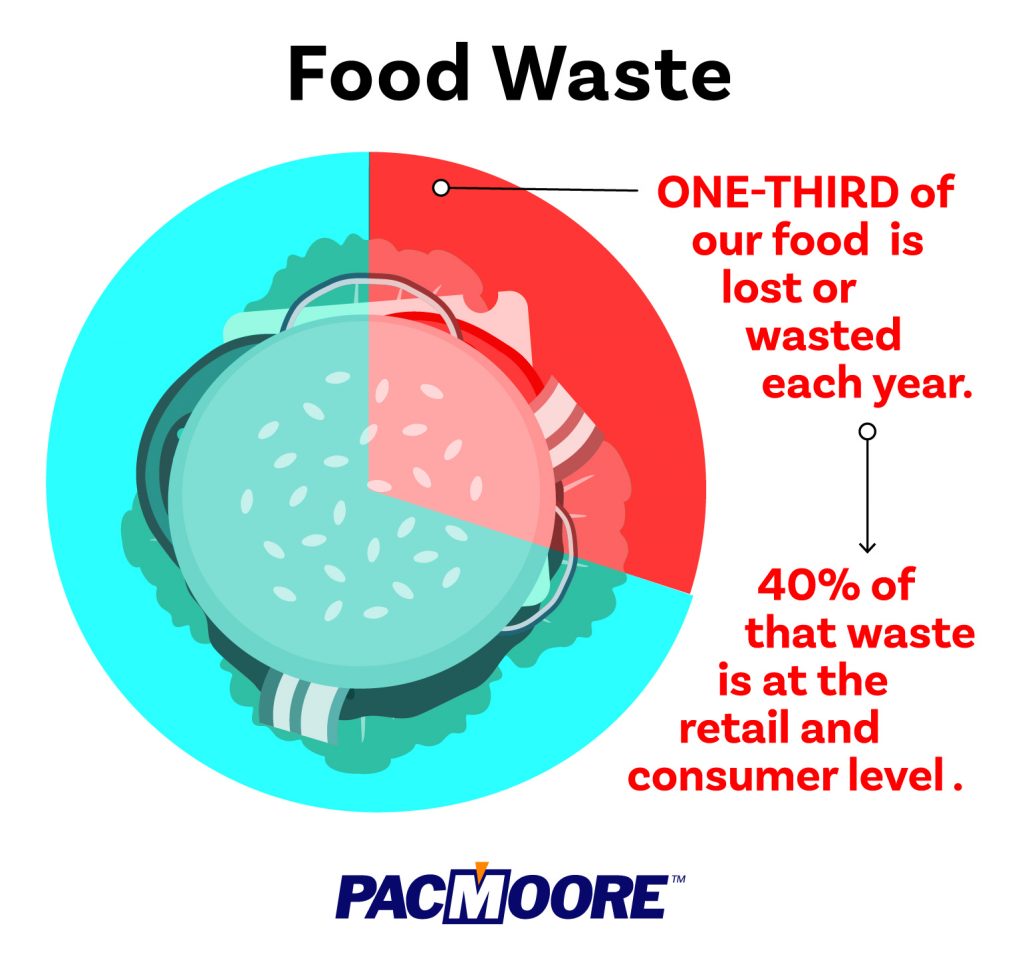Do you know PacMoore’s vision? We are passionately focused on growing people so we can be exceptionally good at feeding the world. Feeding the world seems so simple, but it’s about to get much more complicated.
The world’s population is expected to grow by about 1.6 billion by the year 2050, reaching a total of 9.1 billion people. Some estimates put the number closer to 10 billion. All of those people will need to eat! Today the world produces more than enough food to feed the current population. So why are hundreds of millions of people, mostly in developing countries, undernourished? These hungry people don’t have the resources to access the food they need. Today’s hunger problem, along with future population growth, has led the United Nations to project that our food supply must grow by 70% in order to feed the earth’s population in 2050.
There is no singular approach that will solve all the food security issues in the world. Rather, the world needs to work together on a variety of solutions to bring lasting change. The most promising strategies we’ve discovered tend to fit into two categories: reducing food waste and adopting sustainable farming practices. When each of us takes a hard look at how we can be good stewards of our own food resources, the world will be more equipped for the future ahead.

Reducing Food Waste
According to the Food and Agriculture Organization of the United Nations, roughly one-third of the food produced for human consumption each year is lost or wasted. In industrialized countries, more than 40% of losses happen at retail and consumer levels. While consumers don’t have direct control of food waste happening at the grocery store or throughout the supply chain, you may have more influence than you think. When consumers get serious about something, retailers take notice and follow suit. Here are just a few ideas for how you can start reducing how much food you waste. Find these and more at FDA.gov.
- Plan your meals and stick to your shopping list when buying groceries.
- Consider carefully before buying in bulk. Can you really eat it all before it expires?
- If available, purchase “ugly” fruits or vegetables. “Ugly” produce has physical imperfections but are not damaged or rotten.
- Take restaurant leftovers home to eat later.
- Check the temperature setting of your fridge. Keep the temperature at 40° F or below to keep foods safe. The temperature of your freezer should be 0° F.
- Use your freezer! You can keep many foods from going bad until you are ready to eat them.
- Create a designated space in your fridge for foods that you think will be going bad within a few days.
- Learn about food product date labels. “Use by” or “Best by” dates often refer to the best quality of an item, even if it’s safe to eat after that date has passed. Download the USDA FoodKeeper App for information on how to safely store different foods to maintain freshness and quality.
Sustainable Farming Practices
 We must take care of the planet if we expect to produce enough food for the future population. A few of the most important principles of sustainable farming include: building and maintaining healthy soil, managing water wisely, minimizing pollution, and promoting biodiversity.
We must take care of the planet if we expect to produce enough food for the future population. A few of the most important principles of sustainable farming include: building and maintaining healthy soil, managing water wisely, minimizing pollution, and promoting biodiversity.
After learning that the food supply needs to grow by 70%, it may seem like converting more land into farmland is inevitable. While a few regions of the world can support this approach, most of them can’t. Instead, farmers can use fewer synthetic pest control methods so that soil health will improve over time, increasing crop yields in the long run.
Also harmful to soil health over time is mono-cropping: planting the same annual crops in the same place year after year. Research shows that making the switch to perennial-hybrid grains can do wonders for the soil. Plus, they are more weather resistant and require less water. Biodiversity methods like cover cropping and intercropping also improve soil health and pest control.
Urban farming has been gaining traction in the past few years, and for good reason. Not only does it make good use of limited space, but also provides food at a lower cost, which is especially important to low-income families, many of whom live in food deserts. Small scale urban farming can greatly reduce a family’s carbon footprint. Their home-grown food doesn’t travel a great distance to reach the store, they’re using less packaging, and they’re probably wasting less food because they can pick what they need right off the vine. Rooftop gardens, balcony gardens, vertical gardens, hydroponic gardens, and community gardens are just a few of the creative ways people find to cultivate food in small spaces.
Continue the Conversation
While reducing food waste and increasing sustainable farming practices are a great start, we haven’t even scratched the surface of possible solutions to the food crisis. Changing the way we eat shows great promise as well. Many alternative proteins are gaining popularity, as are diets less dependent on meat and more on plants. What do you think can have the greatest impact on food security? Continue the conversation in the comments section below.
PacMoore keeps a finger on the pulse of the food industry because we’re passionate about growing people and feeding the world. The only way for us to do that is by delighting our customers when we serve them through extrusion, blending, spray drying, and consumer packaging. Contact us today to learn more.
For Further Reading:
https://science.howstuffworks.com/environmental/conservation/issues/5-ideas-for-doubling-the-world-s-food-supply.htm
http://www.fao.org/save-food/resources/keyfindings/en/
http://www.powerhousegrowers.com/14-types-of-urban-agriculture/
Share this on Facebook, Twitter, LinkedIn, Google Plus, or email to a friend.
Click below to share:




